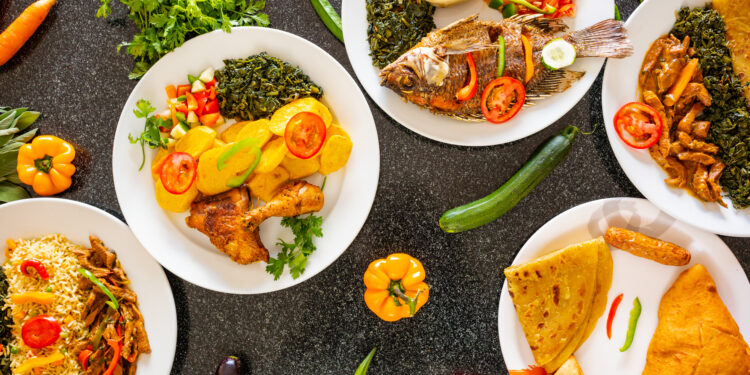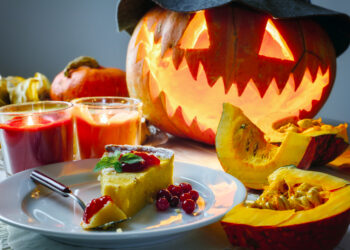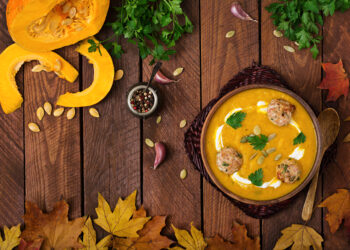How Indo-Caribbean Food Is Entering UK Menus is one of the most exciting culinary conversations of 2025. From rum-spiked curries to doubles popping up in London Street food stalls, the flavours of the Caribbean—seasoned with their Indian roots—are making a lively entrance into Britain’s kitchens. And it’s not just about nostalgia for diaspora communities; it’s about the UK finally cottoning on to a cuisine that has always been bold, inventive, and utterly delicious.
The Indo-Caribbean Legacy in the UK
Indo-Caribbean food is not new to Britain; it’s been simmering quietly in the homes of diaspora families since the Windrush era. But the restaurant scene is only now beginning to recognise its potential. Imagine the Trinidadian roti meeting the British high street curry house menu: you’ve suddenly got a flatbread that doesn’t just mop up sauce, but also doubles as a wrap stuffed with curried chickpeas or spicy goat.
The Indo-Caribbean diaspora has long balanced Caribbean flair with Indian spice, creating dishes that carry stories of migration, resilience, and cultural fusion. Today, chefs are bringing these recipes out of the home kitchen and onto mainstream menus, and diners are lapping it up like extra pepper sauce.
Why Now? The Timing of Indo-Caribbean’s Rise
The UK is in the middle of a food identity shift. Diners are tired of the same tikka masala or jerk chicken presented without imagination. They want something with history, authenticity, and—let’s be honest—a bit of novelty. Indo-Caribbean cuisine ticks all three boxes.
Instagram-friendly? Absolutely. Cultural depth? Unmatched. Spice levels? Adjustable, but often a happy surprise for those who thought “mild” was the only option.
Street food markets, pop-ups, and new-age curry houses are increasingly blending Indo-Caribbean dishes into their line-ups. A dal puri wrap in Shoreditch? Not surprising anymore. Callaloo bhaji next to saag paneer? A perfect example of menus learning to bend borders.
Key Dishes Leading the Charge
So, what’s actually hitting the menus? Here are some Indo-Caribbean staples making waves in the UK:
- Doubles – Fried bara flatbreads filled with curried chickpeas, eaten by hand, and perfect for London’s fast-casual dining crowd.
- Curry Goat – Already beloved in Jamaican kitchens, but the Indo-Caribbean style (often with a more masala-forward base) adds a new twist.
- Aloo Pie – A deep-fried potato pastry that feels familiar yet distinctly Caribbean, perfect for late-night snacking.
- Pelau – Rice, pigeon peas, and meat cooked in caramelised sugar for a smoky-sweet finish. A cousin of Indian pulao, but with a distinctly Trini rhythm.
- Pholourie – Fried spiced dough balls, often dipped in mango chutney. Small bites, big impact.
Each dish can feel both foreign and comfortingly familiar, an unbeatable combination for UK diners who love adventure but don’t want to stray too far from the known.
Curry House Meets Caribbean
One of the most intriguing shifts is how Indo-Caribbean food is weaving into Britain’s existing curry culture. For decades, the curry house has been Britain’s unofficial national kitchen, built largely on South Asian menus. But 2025’s curry houses are experimenting with global influences, and Indo-Caribbean spice blends fit right in.
Think chicken tikka masala reimagined with a splash of coconut milk and Scotch bonnet heat. Or lamb curry prepared with both garam masala and Caribbean green seasoning. It’s fusion without gimmick—it feels natural, because these food traditions share ancestry.
Diaspora Chefs at the Helm
This movement isn’t led by celebrity chefs parachuting into the trend—it’s driven by second- and third-generation Indo-Caribbean Brits who grew up with curry duck at Sunday lunch and roti on school nights. Now, with culinary training and entrepreneurial grit, they’re bringing those recipes to restaurant tables.
For example, pop-up stalls at UK food festivals are introducing non-Caribbean crowds to doubles and pepper roti for the first time. In Birmingham, family-run curry houses are adding Trini dishes alongside their Punjabi staples, appealing to regulars who want to “try something new but not too new.”
The voices pushing Indo-Caribbean cuisine forward are authentic, passionate, and rooted in lived experience—exactly what the modern diner is craving.
The Role of UK Street Food Culture
Street food has become the launchpad for culinary revolutions in the UK, and Indo-Caribbean dishes are thriving in that space. They’re portable, flavour-packed, and visually appealing.
From Manchester’s food markets to South London’s night festivals, Indo-Caribbean food stalls are drawing queues that rival bao buns and smashed burgers. This visibility is nudging Indo-Caribbean cuisine further into the mainstream, and paving the way for permanent restaurant menus to take notice.
Challenges Along the Way
Of course, it’s not all smooth sailing. Many dishes require fresh herbs, spices, or vegetables that aren’t as easily sourced in the UK. Callaloo leaves, for instance, often get swapped for spinach, which slightly shifts the flavour profile. Scotch bonnets, thankfully, are easier to find in British supermarkets now, but certain Caribbean seasonings still require a trip to specialist shops.
The other challenge is education. Diners often need context: What are doubles? How’s pelau different from biryani? Is curry goat actually goat (yes, and it’s delicious)? Restaurants and chefs have to be storytellers as much as cooks.
Why Indo-Caribbean Food Belongs in UK Menus?
Ultimately, the rise of Indo-Caribbean food in the UK feels inevitable. It reflects Britain’s multicultural reality and offers something deeper than a food fad. This cuisine tells a story of migration, adaptation, and identity—served with heat, spice, and a generous ladle of comfort.
For UK menus, it’s not just about adding a “new dish” for the sake of novelty. It’s about expanding the culinary narrative. Indo-Caribbean food belongs because it’s already part of the British experience, quietly at home for decades, now ready for its public stage.
The Future Plate: Where This Is Heading?
Looking ahead, expect Indo-Caribbean food to spread beyond street stalls and curry houses into gastropubs, fine dining, and even supermarkets. Ready-made doubles kit in Tesco? Stranger things have happened. Curry goat pie on a pub menu? It practically writes itself.
There’s also scope for Indo-Caribbean food to influence broader UK cooking trends. Imagine a Sunday roast spiced with green seasoning, or Christmas leftovers turned into pelau. Fusion works best when it feels organic, and Indo-Caribbean flavours integrate seamlessly into British food culture.
A Taste Worth Celebrating
Indo-Caribbean food is more than just a culinary curiosity—it’s comfort, history, and identity served on a plate. Its arrival on UK menus is overdue, but all the more exciting for finally gaining momentum.
So next time you’re scanning a London menu and see curry duck alongside tikka masala, or doubles offered next to naan, take a moment. That’s not just dinner—it’s a quiet revolution in how Britain eats, shaped by generations of diaspora resilience and flavour.
Final Bite!
Indo-Caribbean food is Britain’s next great menu evolution, and the best part is: it’s as welcoming as it is flavourful. Grab a roti, dip a pholourie, and taste the story that’s been simmering all along.
And if you want to keep following how these cultural food journeys unfold, you know where to look—currybien.co.uk, your table is always set.



















